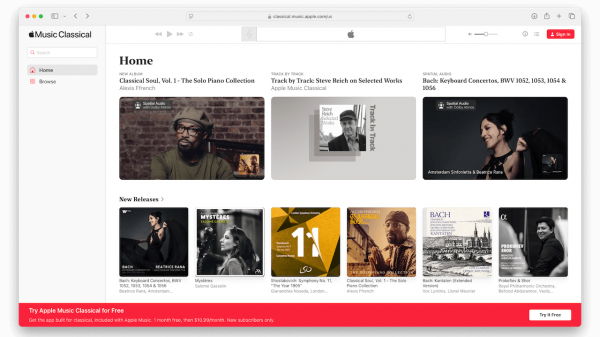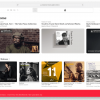I discuss the unanticipated consequences of the 3-minute song in a YouTube video (transcript below). Click play above to watch.
Transcript:
“If you go back to the earliest history of music, you realize that music wasn’t always about entertainment. It wasn’t always about diversion. But it often was embedded in ritual, and the purpose of these rituals was often to get into an altered mindstate, a kind of trance.
“Our knowledge of this expanded enormously starting in the early 1960s. A researcher named Andrew Neher discovered that if you listen to music long enough, your brainwaves begin to match the rhythms of the music.
“Now this was exciting but, in fact, Neher was only making specific—and scientific—information that had existed for a long time. If you go back into ancient times, Ptolemy recognized that a visual rhythm could create an altered mindstate. Ptolemy used a rotating wheel with spokes, and behind it was a source of light. He found that when people stared into the rotating wheel—which created a flicker in the light at a regular rhythm—they eventually experienced a state of euphoria.
“So the ancients knew about this long before neuroscience confirmed it. In fact, this has also been seen in the animal kingdom. People have noticed chimpanzees traveling many miles to get to a waterfall, where they simply sit and look at the reflective rhythms of light moving on the water.
“This is embedded in our brains, the seeking for trance and altered mindstates out of musical rhythm. But here’s the catch: You can’t do that in just three minutes.
“I’ve studied the use of music in ritual all around the world—the shamans of Siberia, or Native American music, or what you see off in Australia. And in almost every instance the musical ritual involving rhythm has to last at least around ten minutes before we get the trance benefit.
“The same is true of body physiology. Dr. Barry Bittman did a study a few years ago of people who play drums in a drum circle. He found that playing drums actually makes you healthier. It changes your blood cell count. It release antibodies into your bloodstream. But once again, Barry Bittman discovered that you need to play drums for ten minutes in order to get the physiological benefits out of the rhythm.
“So this is the conflict we’ve had for centuries between using music as a source of trance and music as a source of entertainment. And even governments get into the mix to regulate this. There’s a famous instance in the year 186 AD when the Roman Senate made the Bacchanalia illegal. The Bacchanalia was a ritual in which people would use music and rhythm to get into altered states. And often they did crazy things in those altered states, even violent things. So the government felt they had to regulate it.
“So there are good reasons for controlling the length of a musical performance. But it’s worth noting that the reason we have 3-minute pop songs has nothing to do with government regulation. It has nothing to do with physiology. It comes from the early history of recordings in which the disks could only contain around 3 minutes of music. At that point you lost storage—or ‘disk space’ as we would call it nowadays.
“We have lived now for the last century with a musical culture that emphasizes 3-minute performances. But the sad thing about this is that it negates the opportunity to create altered mind states and a sense of ecstasy and euphoria out of the music.
“I think this is why we see some very creative musicians fight against the constraints of the three-minute song. If you study, for example, the history of John Coltrane, you see that as he progressed in his career, he wanted his songs to be longer and longer. I don’t think it’s coincidence that almost all of them, at a certain point, went beyond ten minutes.
“There was also a moment with the flowering of rock in the late 1960s, when rock bands were pushing for longer and longer performances. I’ve read an interview with George Harrison, talking about the song “Hey Jude”—the longest Beatles song ever released on record. He said this became a hit single because it had a hypnotic effect.
“We are now long after the stage when we need to worry about disk storage. We no longer need to worry about keeping our songs to three-minutes length. Is it time for us to explore the advantages of longer song forms, not just to get better songs, but to tap into the ability of music to lock into our brain and change our perceptions of reality?
“I would suggest that we need to do that. Music needs to be about more than just about entertainment. We should use our songs to reach that higher level, rather than constrain our lives and our perceptions.”
Postscript: As mentioned at the start of the video, my YouTube talks are unscripted and unedited. So let me add a few other points that I probably should have mentioned in the video.
First, listeners clearly crave songs that are longer than the short tunes favored by commercial radio or most curated playlists. This explains why fans will play their favorite song over and over—they are simply trying to get into a quasi-trance state, and a hit single that ends after three minutes prevents them from doing this. This is why they need to listen to the same song several times in a row.
This also explains why bands play songs for longer stretches in live concert. In those intense settings, performers experience firsthand the hypnotic impact of the music on the audience (and themselves). They instinctively feel the song must keep going, even after they have reached the end of its prescribed duration.
DJs grasp the same imperative. Just consider how focused they are on moving seamlessly from track to track while playing recordings for the dancers. They understand that stopping the music every three minutes would disrupt the mesmerizing effect of their show. At a very early stage in the development of DJing, they adopted two turntable setups for this very reason.
I also should have discussed how profit-maximization motives keep us locked into short songs. On streaming platforms, the payout schemes reward albums made up of shorter songs. I suspect that radio stations find it easier to program commercials if songs are shorter. I have a hunch that there are many other non-musical considerations that reinforce the music industry’s clear bias against long commercial tracks. I’d like to see an economist quantify the financial impact of song length for each stakeholder in the value chain (songwriters, publishers, record labels, streaming platforms, etc.).
As a final note, let me share the story of an overseas concert I gave once, when my band got to the end of the song—but we kept on playing for several more minutes, almost as if it some powerful outside source demanded it. All I can say is that it felt right to continue playing, and every member of the band grasped this intuitively. I suspect every jazz or rock group does this from time to time—almost without thinking about it. But in this instance, I asked the drummer after the gig: “Why didn’t we stop the song where we were supposed to.” He wisely answered: “Stopping the song there would have been like trying to stop a freight train.”
In other words, musicians feel instinctively that disrupting the pathway into euphoria and trance is just plain wrong. And you can’t achieve it in just three minutes. Maybe it’s time the record industry started to take advantage of this simple fact.
Ted Gioia is a leading music writer, and author of eleven books including The History of Jazz and Music: A Subversive History. This article originally appeared on his Substack column and newsletter The Honest Broker.













































ORT
June 24, 2022 at 2:02 am
My mother taught me thus – Do NOT make more out of some thing until it has proven worthy of doing so. This is true in relationships and music. Why do I group them together in this instance? To make a viable point.
Because love is friendship set to music.
Most songs are brief out of necessity. Some, like “Hey Jude” and “America Pie” are much longer and again, out of necessity.
The Awful Truth (tip o’ the hat to Cary Grant and Irene “Hubbah! Hubba!” Dunne!) is that the majority of songs of worth are not worthy of being longer. Even really good ones like “She Loves You” or “Alone Again, Naturally”. Just imagine a 20 minute version of “The Hippy Hippy Shake”. Or a 17 minutes and 5 seconds version of ‘In-A-Gadda-Da-Vida”…Oh wait! Never mind…
They are brief because not only is brevity the soul of whit, it is also the heart of desire. “Sigh”…The kiddies will have to think about that, I know.
The problem is not the length of the song but the quality or rather, the lack of quality in modern “song”. Longer playing time does not equal better quality, just more playing time. 2.5 minutes of cRap or 8 minutes of cRap matters not cuz it is still cRap!
As for the great Coltrane? Jazz musicians are far too guilty of the long playing of scales and calling it “music”. I am a tremendous Jazz enthusiast but will fast-forward through some one “blowing” nothing but hot air for several minutes before returning to the melody. Stupid practice that one.
And as much as I like George Harrison’s magnum opus, “All Things Must Pass”, I only listen to the “Apple Jam” disc once every 20 or so years. 😉 It’s good but too long to remain good for more than a few minutes at a time.
Be careful of what you ask for, the morons of music just might give you the business.
ORT